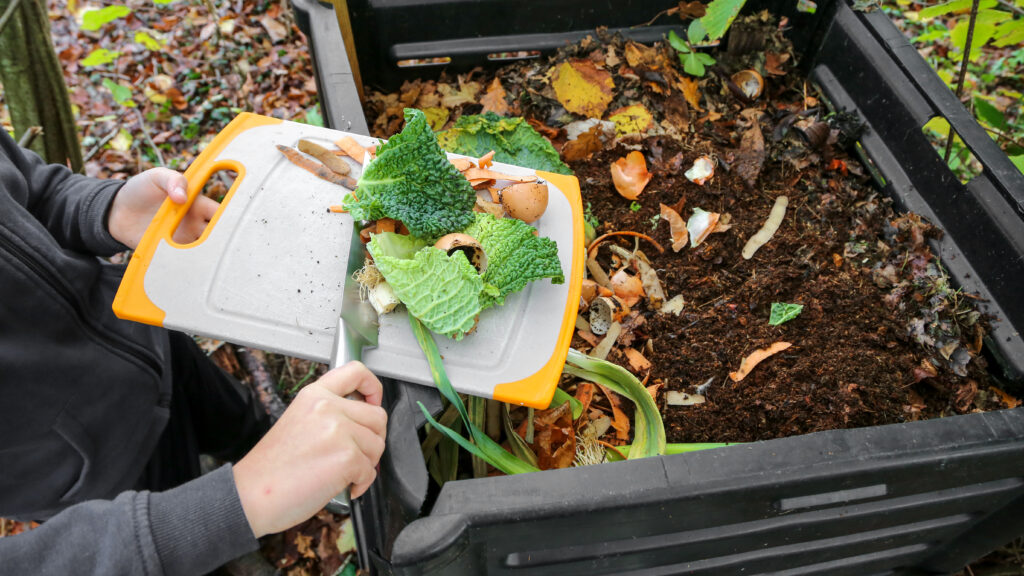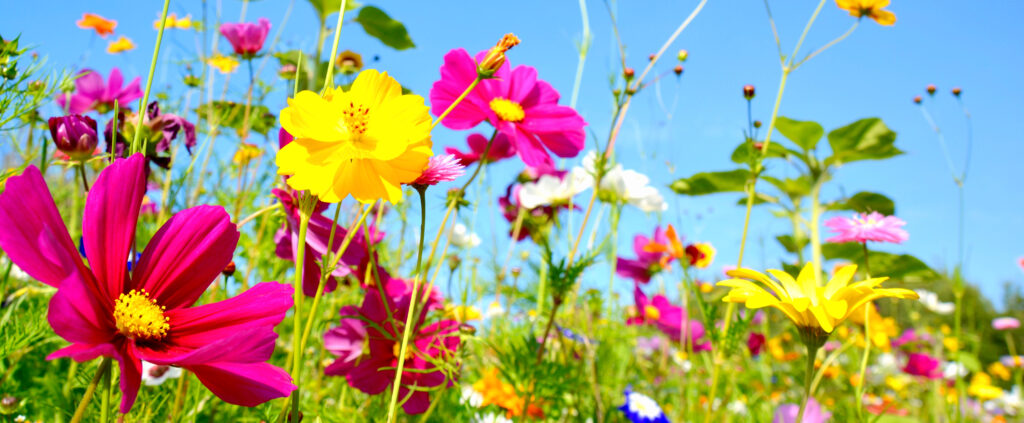St. Patrick is synonymous with the emerald isle and a celebration of all things green—and, perhaps, a healthy distrust of snakes. As we approach his yearly day of recognition, it’s worth taking a look at things homeowners can do to preserve the planet with a few eco-conscious tips on how to go green for St. Paddy’s Day.
Composting turns your trash into treasure
Composting is the natural method by which microorganisms break down organic material into fertile, usable soil, and it’s estimated home composting could reduce the amount of trash sent to landfills by a whopping 30%. The idea of composting can turn some people off though—no one wants a pile of rotting garbage lying around. But this is one of the many misconceptions about composting. If it’s done right, composting is an effective, low-effort, and stink-free way of turning household scraps into a valuable commodity.
First, sort your scraps into “green” and “brown.” Green compost materials still have water in them (vegetable scraps from the kitchen, lawn clippings, freshly picked weeds, etc.) while brown materials are dry (ink-free cardboard, paper egg containers, dried leaves, etc.). Green scraps are good sources of nitrogen and other important soil nutrients while brown ones deliver all-important carbon into the mix—good compost needs a one-to-one mix of green and brown.
Pick a large, well-ventilated container to add your scraps into. Airflow is important since the organisms that break down the soil need oxygen. Use an old wooden box with plenty of holes, a chicken wire cage, or even a simple pile in a remote area of the backyard—there are also plenty of home composters available that are a little more discreet.

Make your compost pile and wet it down thoroughly with a hose, and congratulations, you’re an environmental champion! In a few months, your compost will be a nutrient-rich, black color that smells sweet and earthy, and can be used as a planting medium or as an organic fertilizer for plants and trees.
However, there are a few catches before you fill up your flower pots with homemade dirt. Never add meat, dairy, or animal waste (pet droppings included) of any kind as these will simply rot and attract pests. Be careful to keep any plastics or non-compostable packaging out of your precious pile, too.
Earth-conscious homeowners who lack the space or time to take up composting also have plenty of options for local services that will do it on your behalf—some will even pick up your compostable trash for you!
Pick the perfect (native) plants
If you’ve lived in Nevada for any amount of time, you might have noticed something—we don’t get a lot of water around these parts. As more and more of the American West finds itself in dire drought conditions, a fantastic way for desert-dwellers to go green is by saving water on their landscaping choices. Native plants are hardy enough to survive Nevada’s scorching summers and frosty winters, require little water, and provide homes to many native insect and animal species.
A great first step in connecting with your native foliage is to visit a local plant nursery. Many nurseries will have researched the kinds of plants that grow readily in our area, and some even employ expert “plant doctors” to answer specific questions about water and shade requirements.
Ask about drought-tolerant varieties to cut back on excessive watering and learn the difference between a perennial (a plant that only lives for a single year) and an annual (which comes back every spring and summer) to help you better plan out how much work you’ll need to do for your outside space.
Finally, not everyone is ready to let go of the classic American lawn, but those who are ready to ditch the turf can find serious savings—both financially and ecologically. The EPA estimates 15% of the average American family’s water usage goes to watering the lawn. But, with readily available xeriscape options, water usage can be significantly lowered while maintaining a clean, attractive space that’s both visually appealing and good for our native flora and fauna.

Good air in, bad air out
There are a lot of big, complicated problems affecting our climate right now, but for homeowners, one of the most impactful ways to go green also happens to be one of the simplest: invest in better insulation. The EPA estimates that properly insulating the walls and attic of your home can result in energy savings of up to 15%, and correct insulation can save 2 tons of CO2 emissions per household—every year!
You can start to test your insulation by carefully examining your doors and windows. Close them as you normally would and attempt to shine a light through the gaps around the frame or sill (you might need a friend or family member to help). If even the slightest amount of light is visible, the resulting loss of air can be staggering.
Look for home insulation kits at your local hardware store to stem the lost air and consider contacting an insulation company to give your house a thorough inspection of the level and type of insulation you need. Not all insulation is made the same, however, and certain types can be fossil fuel-intensive to make.
Ask about products with recycled material content to help lower your impact and inquire about the availability of natural materials. With a properly insulated home, you and your family can live more comfortably while saving money in utility costs and minimizing your carbon footprint for years to come.
Go green with Dickson Realty and celebrate the holiday and responsible homeownership practices. For plenty more tips and info about property in Nevada, check out the rest of our blog or call one of our representatives today!



